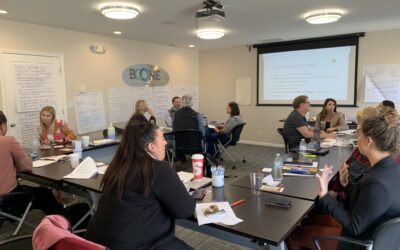 It is argued that the United States is the most overworked country globally. Some individuals may be OK with working extra hours, but for many, it’s about balancing work, family, and other personal activities. The unbalance can often lead to stress, which in turn affects each area of a person’s life. Regardless of your job title, being aware of employee stress levels can be beneficial and result in effective program outcomes.
It is argued that the United States is the most overworked country globally. Some individuals may be OK with working extra hours, but for many, it’s about balancing work, family, and other personal activities. The unbalance can often lead to stress, which in turn affects each area of a person’s life. Regardless of your job title, being aware of employee stress levels can be beneficial and result in effective program outcomes.
The National Institute for Occupational Safety and Health (NIOSH) published that 40% of workers reported their job was very or extremely stressful, and 25% viewed their job as the number one stressor in their lives (Stress…At Work, 4-5). Stress on employees can lead to burnout, a lack of productivity and increased risk of health problems.
At TCG, we serve government, non-profits, education, and communities. When working with clients, we often find that the pressure to meet program outcomes and the passion for clients and the cause can increase stress beyond those of other businesses. We suggest that if you truly want to equip your employees to accelerate your impact, then assessing the stress and well-being of staff is a good place to start.
We recently worked with a local school seeking grant funding from the Lilly Endowment to improve the health and well-being of its students. In addition to assessing the students’ needs, we also wanted to assess the health and well-being of the teachers. The staff has a direct impact on students and the school culture/ climate.
When is the right time to assess staff stress in the workplace?
Assessing staff stress should be an ongoing practice at organizations. Make it an annual occurrence or incorporate staff check-ins regularly. You can also reevaluate staff workloads and overall health during a severe event or strategic planning process.
During our work with the local school to apply for a comprehensive counseling grant, we realized that before we could meet the goals we set for the students (emotional health, academic success, etc.), we had to ensure that the teachers had the capability to support the program. This is an example of why it is important to bring staff in during the strategic planning process.
If a need is recognized, such as annual tracking or a serious event, management can intentionally assess staff stress levels. Have you heard the line, “It’s not you, it’s me”? Sometimes, the organization may not be at fault for staff stress, but this is not always true. Personal factors, like finances, family, social, or other factors, can cause employee stress. These can be distracting during work or cause work absences. Assessing staff and finding the cause of distractions will help employers better understand how to work with and support employees.
How should staff stress be assessed?
Stress, like pain, is relative to every individual and can be challenging to measure. We recommend developing a survey using evidence-based questions and assessment tools. Craft general questions related to workplace stress or more personal questions to help better understand employees’ personal experiences.
Within your organization’s respective industry, there are more than likely some standard questionnaires to assess your workforce. For example, when working with the schools, we found several assessments geared to questions for teachers.
We created an electronic survey to assess the workplace stress of teachers and support staff. We included general questions about workplace stress, along with the Adverse Childhood Experiences (ACEs) survey (which we spotlighted in this blog). The results gave us a comprehensive look at how stressful staff felt in the workplace and revealed any adverse childhood experiences that affected their overall health and ability to work.
What should you do with the results of staff stress feedback?
Like any data collection process, it should serve a purpose. If stress is a workplace issue, try to determine what situations are flexible to ease the stress of staff within the organization’s and mission’s limits. Here are some suggestions to consider:
- Adjust management style
- Alter staff responsibilities
- Hire extra staff
- Offer pay increases, bonus incentives, or extra time off
- Change program models
- Include staff in program model decisions (like choosing a curriculum or other materials)
- Ensure necessities are being provided, like food, water, and bathroom breaks!
When working with the local school, we analyzed their staff feedback and other data in Tableau, a data visualization software. We discovered that a majority (59%) of staff felt always or often stressed at work. We also asked identifying questions so each school administrator would be able to pinpoint the specific work areas that cause stress to their employees. This knowledge helped develop an action to address staff well-being to benefit each school.
One method may not work for every organization or individual. Find what works best and continue to monitor progress and make adjusts as necessary.
At TCG, we want to help you move your mission forward, and that often starts by taking care of your staff! We support organizations that want to have healthy staff, reduce turnover, and increase productivity and engagement to accomplish their goals and accelerate their impact! Do you need help accessing your team? You may already know your staff is stretched and ready for additional support. Learn more about our services here, and contact us today!



